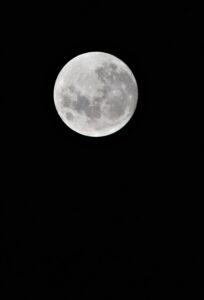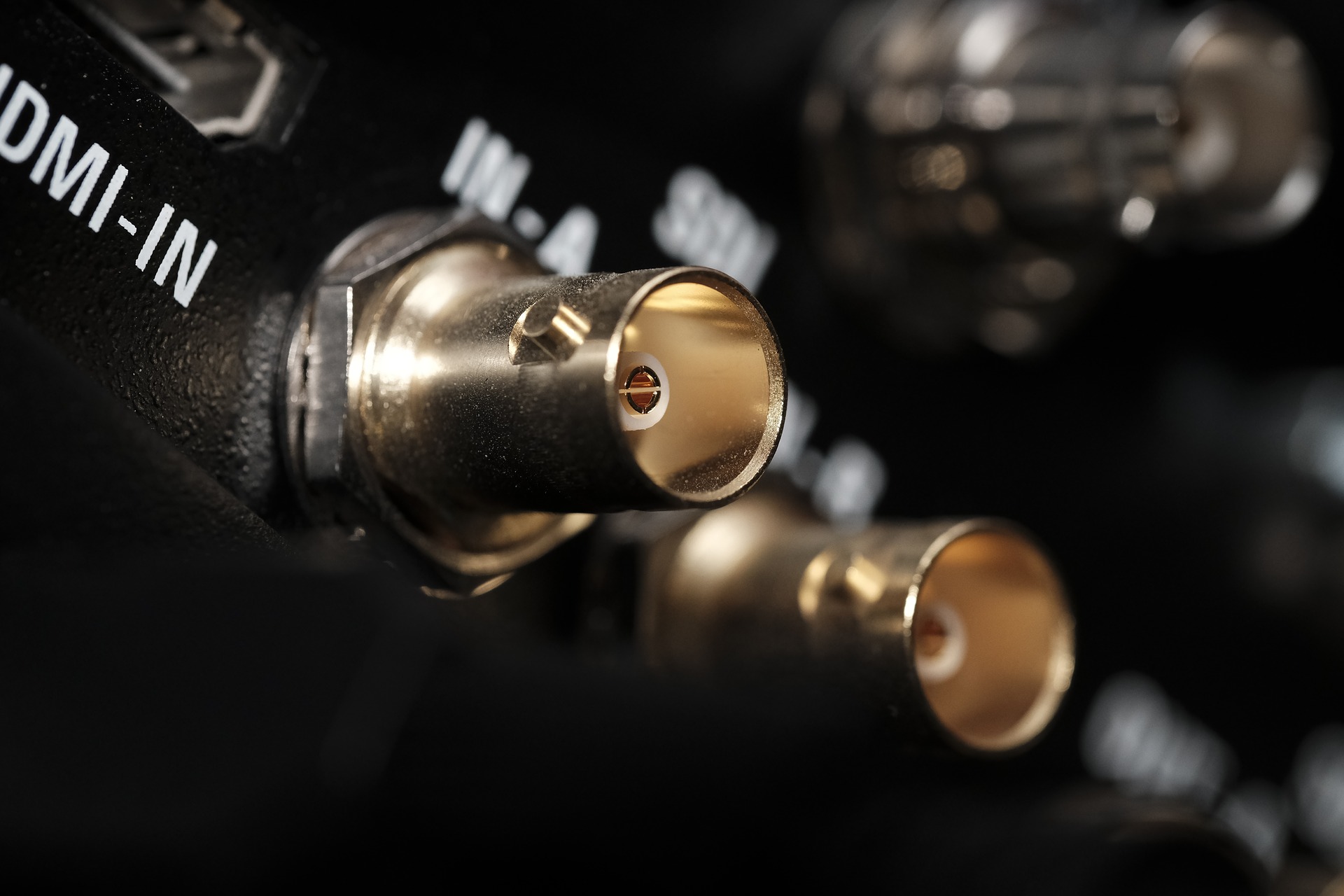What is the blooming effect on TV?
Especially with LCD TVs that have LED backlighting, it is often noticeable that a white glow can be seen around very bright objects in front of a dark background. This is often referred to as blooming or the halo effect, because the artifact often looks like a halo. What is the blooming effect and where does it come from? We have summarized the most important information here.
What does Blooming mean? Definition and explanation

A good example to show the blooming effect pictorially is a full moon in a dark sky or subtitles in a very dark movie. If the edges are clearly visible, then the backlight works very well.
However, if you can see a bright glimmer around the moon or around the subtitle letters, it’s often a sign of uneven backlighting. These image artifacts are called blooming or the halo effect because it often looks like a halo.
Clouding and Dirty Screen Effect
Other artifacts that can occur in connection with uneven backlighting are clouding and the dirty screen effect. The former is derived from the English word for cloudiness and describes brighter areas that can also occur on LCD TVs. Clouding is usually found at the edges of the TV.
The Dirty Screen Effect is most visible in sports broadcasts. It means that the same hue looks different in other parts of the screen. For example, the grass in a soccer game looks blotchy and uneven.
LED backlight: Two different types
To understand where such an artifact comes from, you have to take a closer look at the structure of an LCD panel. Besides the LED backlight, the Liquid Crystal layer is the first thing that is interesting here, as it keeps the light out or lets it through.
Even more important, however, is the corresponding LED backlight, which provides the appropriate light in LCD TVs. While the individual pixels themselves light up in OLED TVs, all LCD TVs rely on a backlight. Meanwhile, there are different technologies here and the price of a TV also plays a role since the better technologies are often saved for the expensive models.
Edge LED backlight
In this form of backlighting, the LEDs are usually located at the lower edge of the display and thus have to illuminate the entire screen. Dimming is possible here, but you can only dim the vertical stripes next to each other. TVs with edge LED backlighting are usually characterized by a comparatively low contrast and poor black levels.

Full Array LED Backlight
This type of backlight, which is also often called Direct-LED, is located directly behind the entire panel and thus fills the entire surface of the display. The backlight is divided into zones that can be dimmed individually. The more dimming zones a TV has, the better the result. This offers significantly more options for the illumination, which also simply looks more even overall.
What does Local Dimming mean?
Local dimming means that the individual zones can be dimmed locally and independently of each other. In the case of full array backlighting, this is referred to as full array local dimming, which is also often abbreviated as FALD. One advantage of full array local dimming compared to edge LED local dimming is that not only vertical stripes can be dimmed, but the respective dimming zones. The whole thing can be thought of as a grid of e.g. 5 x 6 rows, which ultimately results in 30 individual dimming zones. In practice, this is of course considerably more zones and the larger the display, the more dimming zones are usually available.
Due to the many dimming zones, a significantly higher contrast and a better black level can be achieved. Therefore, a well-functioning Full Array Local Dimming is always an enrichment for every LCD TV. Another advantage is also that a higher peak brightness can be achieved compared to an OLED TV. Especially with HDR content, highlights can stand out much better this way.
In addition, the dimming algorithm, i.e. the calculation behind the dimming of the individual zones, is extremely important. This can be calculated better or worse by different manufacturers. A combination of the number of dimming zones and the algorithm ultimately leads to a better picture quality and less blooming.
Sony’s XR Backlight Master Drive
The manufacturer Sony announced at CES 2022 that it will bring back its in-house technology XR Backlight Master Drive. This is an algorithm that optimizes the backlight and was already found in Sony’s ZD9 and the 8K TV ZG9.
The technology is to be used in the LCD flagships Sony X95K and Z9K, which both use a mini LED backlight. Here, XR Backlight Master Drive is supposed to cause the maximum brightness to be increased significantly and the blooming effect to be reduced considerably. This ultimately creates a better contrast ratio, which positively influences the overall picture quality of both TVs.
“XR Backlight Master Drive: Powered by the Cognitive Processor XR, XR Backlight Master Drive uses a Sony-developed local dimming algorithm to individually control thousands of tiny, extremely high-density mini-LEDs with absolute precision. The result: exceptional brightness, impressive dynamic range, deep blacks and remarkably natural midtones.” © Sony Press Release

Alternatives and other technologies
Of course, there are other technologies that reduce blooming to a minimum, because it can’t be completely eliminated from LCD TVs. We have listed the different technologies here.
Mini LED backlight
Mini LED backlighting is not a really new technology because it is still based on LEDs. However, the LEDs here are much smaller than in a normal LED backlight, which is why many more LEDs fit into a panel.
This allows for significantly more dimming zones, which ultimately also enables an even higher contrast as well as an even better black level.
Samsung introduced the Mini LED backlight to the market in 2021 and the flagship Neo QLED QN90A has 792 dimming zones in the 65-inch size and thus very precise local dimming. Nevertheless, minimal blooming can occur here as well.
OLED TV
The self-luminous pixels of an OLED TV make a backlight obsolete. Therefore, they can also display a perfect black because the individual pixels then simply turn off completely. The contrast is also theoretically infinite in this respect because each pixel can dim itself independently.
This also prevents blooming because there are no individual dimming zones in an OLED. However, burn-in can occur here, even if the risk is only theoretical in the private sector. However, this is a reason for no such high peak brightness, since the Automatic Brightness Limiter switches on at some point to protect the pixels.
The LG C1 OLED is a prime example of an OLED TV with the perfect picture. Blooming can be found here in vain because every single pixel can light up by itself.
Frequently asked questions about Blooming
How is blooming created?
A bright shimmer around light content on a dark background is called blooming. This image defect occurs on LCD televisions because they rely on separate backlighting. Sometimes you will also find the term halo effect, as the defect can look like a halo. Depending on how well the backlight works, the blooming effect will be smaller.
Other picture errors that can be attributed to uneven backlighting are clouding and the Dirty Screen Effect.
Is it possible to eliminate the blooming effect?
Blooming can never be completely avoided on an LCD TV, but it can be minimized. High-quality TVs that have a very good dimming algorithm and many dimming zones can minimize blooming better than inexpensive TVs that do not have a local dimming function.
Are there TVs without a blooming effect?
Since OLED TVs do not need a separate backlight, they do not have a blooming effect. Each pixel is lit independently and no local dimming function is needed for dimming.
Are there other technologies that minimize blooming?
Sony relies on the XR Backlight Master Drive technology for its expensive LCD TVs, which can additionally optimize the Mini LED backlight. Thus, the maximum brightness can be increased significantly, but blooming can still be minimized.








